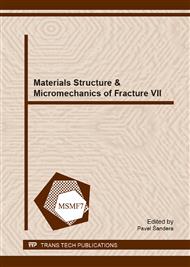p.610
p.614
p.618
p.622
p.627
p.631
p.635
p.639
p.643
High Temperature Fatigue Strength and Quantitative Metallography of an Eutectic Al-Si Alloy for Piston Application
Abstract:
Eutectic Al-Si alloys are typically used for the production of internal combustion engine pistons. A high-cycle, high-temperature fatigue characterization of AlSi12 alloy performed using specimens extracted from actual pistons is presented and discussed. Fatigue strength at 107 cycles were obtained at test temperatures of 250 °C, 300 °C and 350 °C. The fatigue strength reduction was quantified. The micro structural features were quantified by quantitative metallography and fatigue fracture surfaces inspected to identify the initiation causes.
Info:
Periodical:
Pages:
627-630
Citation:
Online since:
November 2013
Authors:
Price:
Сopyright:
© 2014 Trans Tech Publications Ltd. All Rights Reserved
Share:
Citation:


